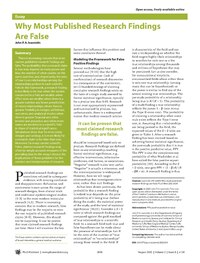
Photo from wikipedia
ABSTRACT Anti-tumor treatment outcomes in mouse experiments can be challenging to interpret and communicate accurately. In reporting these experiments, rigorous statistical considerations are commonly absent, although statistical applications have been… Click to show full abstract
ABSTRACT Anti-tumor treatment outcomes in mouse experiments can be challenging to interpret and communicate accurately. In reporting these experiments, rigorous statistical considerations are commonly absent, although statistical applications have been proposed. We investigated the practicality and utility of different statistical strategies for the analysis of anti-tumor responses in a longitudinal mouse case study. Each analysis that we performed had different endpoints, investigated different questions, and was based on different assumptions. We found rudimentary visual and risk analysis insufficient without additional considerations, and upon further investigation we found improvements in key anti-tumor parameter estimates associated with a drug combination in our case study. We offer practical statistical considerations for investigating anti-cancer treatments in mice, applying a multi-tier statistical approach.
Journal Title: Journal of Applied Statistics
Year Published: 2019
Link to full text (if available)
Share on Social Media: Sign Up to like & get
recommendations!